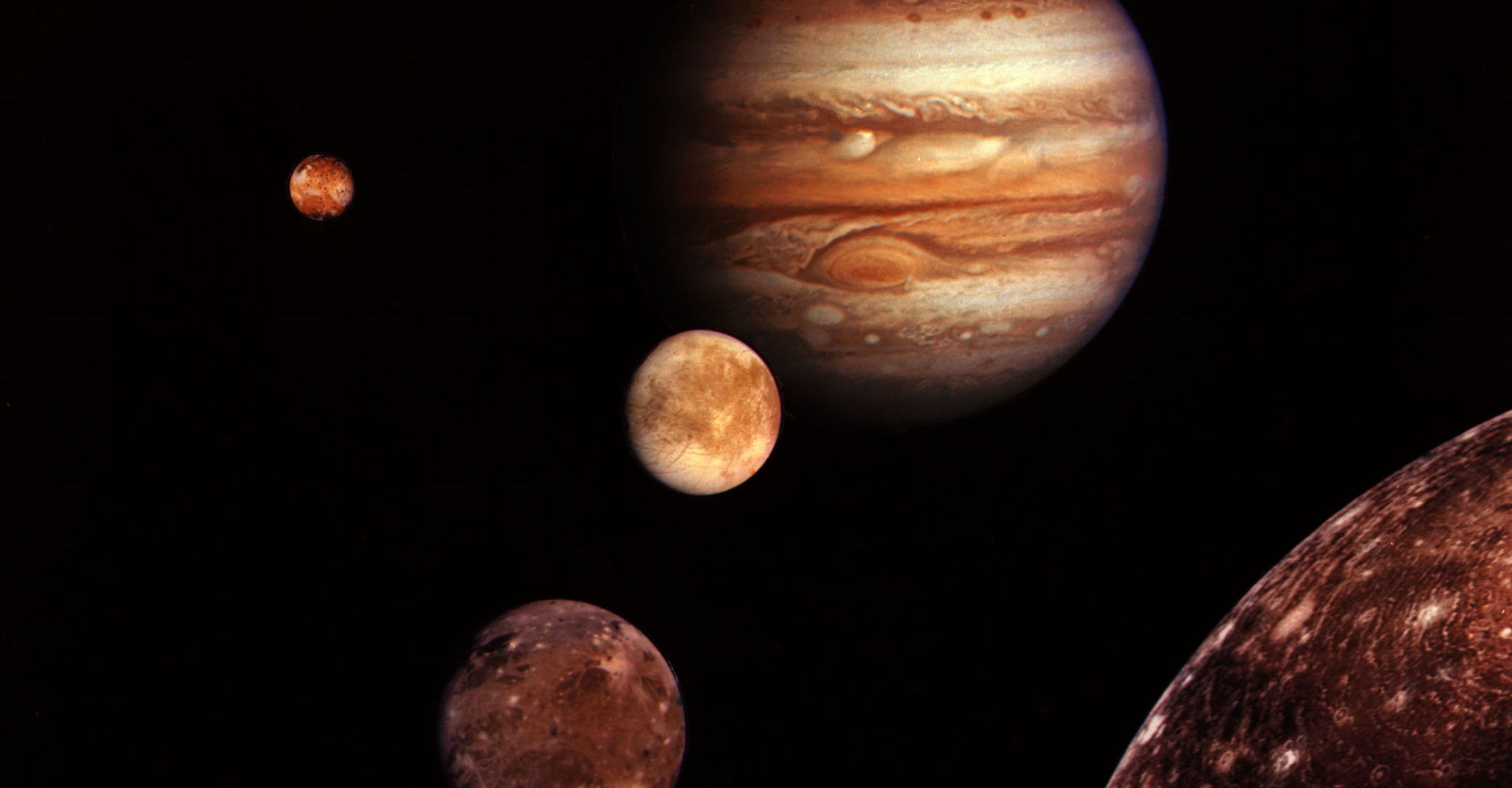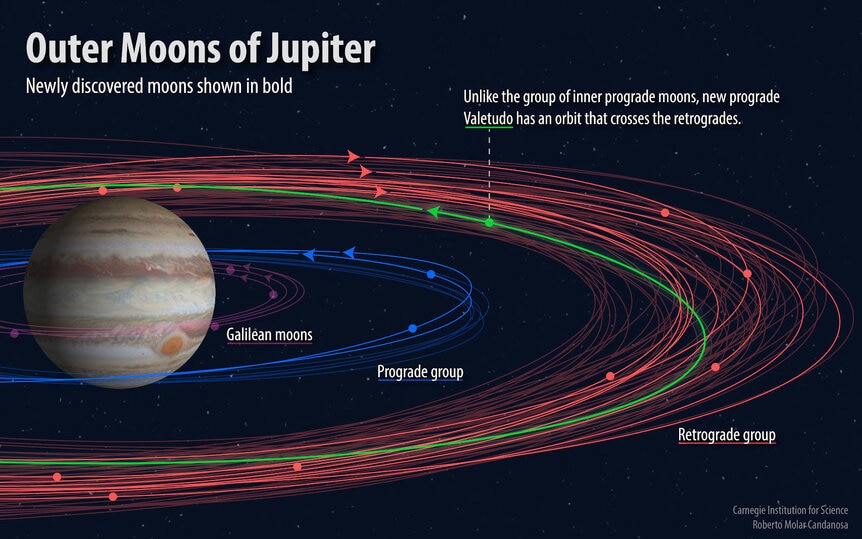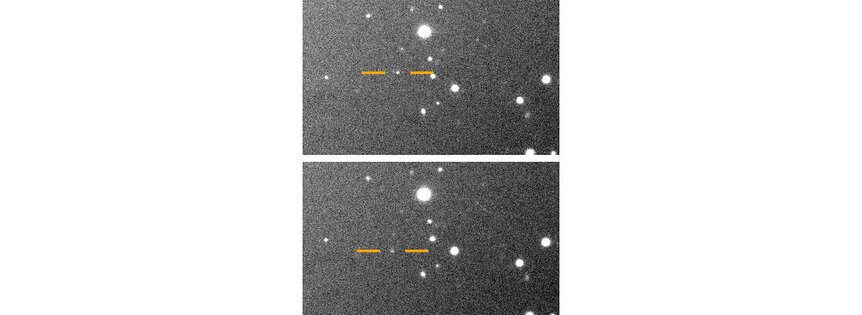Create a free profile to get unlimited access to exclusive videos, sweepstakes, and more!
A dozen new moons for Jupiter!

Jupiter is the largest and most massive of all the solar system’s planets, so it’s no surprise it has a lot of moons. Galileo discovered the four biggest ones back in the 17th century, and a lot of smaller ones have been found as telescopes and techniques have improved. Even so, it’s a bit of a surprise to see that this week astronomers announced finding an even dozen more moons orbiting the king of the planets!
Even better, they were found as a kind of bonus. The astronomers were looking for Kuiper Belt Objects (or KBOs), icy bodies orbiting the Sun beyond Neptune. If there’s another planet orbiting the Sun way, way far out — the so-called Planet Nine — then its gravity may affect the orbits of these KBOs, allowing astronomers to figure out where this possible planet is. That was the primary purpose of the observations, but it so happens that Jupiter was nearby in the sky where they were looking. If there were previously undiscovered moons in far-flung orbits around Jupiter, they might spot them, too.
And so they did. The observations were made in 2017, but it took a year to track them long enough to nail down their orbits. Some of them are so far from Jupiter that they take two years to travel around it once!
And what doesn’t surprise me at all is that they’re weird. This happens every time we push observations to the limits, looking for faint, small beasties, and these new moons don’t disappoint.
Nine of the moons are very distant from Jupiter, and orbit it retrograde — backward relative to Jupiter’s spin. Most big objects in the solar system orbit the Sun and spin in the same sense (the motion is counterclockwise when looking down from above the Earth’s north pole). Since all these objects formed from the same spinning disk of gas and dust when the solar system was born, this makes sense (and in fact was why this formation mechanism of the Sun and planets was first proposed decades ago).
But these moons orbit clockwise, indicating a different formation mechanism. They may have started off as asteroids orbiting the Sun prograde, but were captured by Jupiter’s ridiculously strong gravity. If the geometry were just right, these objects could then find themselves orbiting Jupiter retrograde; we do see this in other moons of the outer planets.
Not only that, but when the orbital characteristics (shape, tilt, and so on) are compared, these nine retrograde moons seem to fall into three groups; that implies that each group used to be a single moon that got smashed somehow, possibly a collision with another moon-sized body. The remaining pieces separated but still held on to the same sorts of orbits.
Two of the new moons orbit Jupiter closer in, and are prograde. The twelfth moon, though, is the weirdest of all. Given a provisional name Valetudo (the great-granddaughter of Jupiter in mythology*), it orbits prograde, but is also so far from Jupiter that its orbit is solidly among the retrograde moons! That’s very surprising, because in the long run such an orbit is bad news. When moons move all in the same direction, collisions are less likely, as when a bunch of cars are all driving in the same direction on one side of the highway. But now put a car moving in the wrong direction in that lane, and things will go downhill fast.
Over the lifetime of the solar system, a collision seems inevitable. That implies this moon (or the retrograde moons) are literally new, captured recently compared to the age of the solar system itself. It’s possible to delay the inevitable if the orbits are slightly tilted with respect to one another, but even then, given enough time, bang. And in fact all the groups of shattered retrograde objects do lend credence to this idea. They must’ve hit something in the past.
Valetudo is the smallest of the moons discovered, likely just under a kilometer wide (the size isn’t measured directly — it’s too small — but estimated from its brightness). It’s also possibly the smallest moon known around the planet. The other newly discovered range up to three kilometers in diameter.
Incidentally, this brings the total known moons of Jupiter to 79. That’s the most of any planet.
This is all cool, and shows there’s a lot to learn about our system’s planets, even ones very well studied. It also makes me wonder if there’s a lower limit to what we’d call a moon. Imagine if we find a rock that’s, say, 10 meters across. Is that properly a moon, or just a bit of debris? What about the trillions of icy particles in Saturn’s rings?
Of course, none of these objects care what we call them. It’s better not to fret too much on that, and instead focus on the rich diversity of worlds and worldlets in our neighborhood. There’s still so much left to see, so much left to discover!
* In Greek mythology, the goddess of health was Hygieia. This was then appropriated by the Romans (as they did) and renamed Valetudo. The fourth largest asteroid is named Hygieia, so that name was already taken for the moon! Valetudo isn’t official, but has been proposed, and all the moons may eventually be given names by the International Astronomical Union.




























